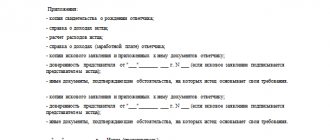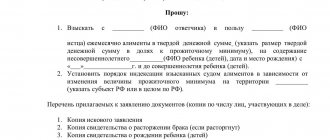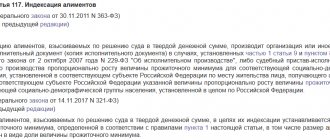- A claim to recover money for an unprovided service: the essence of the document
- Grounds for complaint
- Application for recovery of the cost of uncompleted work: features
- Documents for refunding money for services not provided
- The procedure for signing an application to collect money for work/service not provided
When concluding contracts for the performance of work or the provision of services, the liability of the parties for failure to fulfill obligations is necessarily stipulated.
Thus, the cost of work or services in case of non-fulfillment of the contract is subject to recovery in court. To recover, you should prepare a statement of claim and submit it to the magistrates or district court, depending on the value of the claim. A statement of claim for recovery of the cost of unperformed work (unrendered service) is filed in the event of a violation of the deadlines under the relevant contract. This is regarded as a waiver by the performer of his obligations. In this case, the pre-trial dispute resolution procedure is optional. A statement of claim for recovery of the cost of work not performed (service not provided) is provided for by the norms of civil legislation - Article 131 of the Civil Code of the Russian Federation.
When might it be necessary to file a lawsuit to recover funds?
Among the cases where it is necessary to recover funds in court, the following can be identified:
- wage claim;
- claim for a loan (receipt);
- demand for return of unjust enrichment;
- claim for alimony (including penalty for alimony);
- collection of penalties for the use of money or failure to fulfill an obligation;
- insurance claim;
- consumer protection statement
- and etc.
A specially calculated norm is needed in order to avoid any controversial issues in the future. In modern legislation, there is a special point that provides for such methods of protecting violated rights that make it possible to collect interest for the use of other people's finances.
Pre-trial proceedings
Before going to court and filing a claim, an attempt must be made to resolve the conflict out of court.
Based on the text of paragraph 1 of Art. 18 of the Law “On the Protection of Consumer Rights”, the buyer has the right to demand a refund from the seller if defects (does not apply to goods from the list of technically complex ones).
Return and exchange of goods of good quality is regulated by Art. 25 ZPPP.
According to the legislation of the Russian Federation, it occurs both with the consent of the parties to the conflict, and with the categorical disagreement of one or both.
It is better to carry out pre-trial settlement through an experienced lawyer who is well acquainted with the law and legal practice and has already worked in similar situations.
If the parties to the conflict manage to come to an agreement during pre-trial proceedings, this will greatly save them money that would otherwise be spent on legal costs, and, perhaps, will allow them to maintain partnerships in the future. Otherwise, you should prepare to go to court.
If the claim procedure is not followed, the court has the right :
- return the statement of claim (Article 129 of the Arbitration Procedure Code of the Russian Federation);
- if the claim was nevertheless accepted for proceedings, leave it without consideration (Article 148 of the Arbitration Procedure Code of the Russian Federation).
Deadline for filing a claim for recovery of money
The claim for recovery of funds must be drawn up correctly and taking into account the established details according to the required sample.
At the same time, it is necessary to pay attention to the timing of claiming money. For example, the time limit for recovery of unjust enrichment is a three-year period.
If the deadline is missed, the court may reject the claim based only on this fact. But do not forget that there is a procedure for restoring the statute of limitations. If you don’t know how to do everything correctly, you need to contact a specialist who will help you draw up a statement of claim, restore the deadlines if there are grounds for it, and represent your interests both in court and at the stage of execution of the court decision. If necessary, a lawyer can collect the bill in court and can help in other matters.
USEFUL: watch a video on the topic of lawyer in civil cases, write your question in the comments of the video and get advice from a lawyer
We return the debt by receipt
Having a receipt from the debtor is already half the success. Sometimes it happens that even quite large sums of money are borrowed just like that, and then there is practically no chance of repayment (but more on that a little later).
If you still took care of receiving a receipt, you can safely go to court. However, we recommend that you first try to reach an agreement with the debtor yourself, since court proceedings are not a quick and not the most pleasant process. But, of course, if the debtor is in no hurry to repay the money or has begun to go into hiding, it is most often impossible to do without the involvement of the judicial authorities.
First of all, you need to decide which court you should go to - the world court or the district court? This depends on the amount of the debt: if it is less than 500,000 rubles, then the application should be submitted to the justices of the peace, and if it is more, then to the district court.
In this case, you need to make sure that the receipt is drawn up correctly (otherwise problems may arise when contacting the judicial authorities). This document must contain:
- Full name and passport details of the debtor and creditor;
- loan size (the amount is indicated not only in numbers, but also in words);
- confirmation of the transfer of funds with an obligation to return;
- debt repayment date;
- information about interest (if any) and liability for late payments;
- place and date of document preparation;
- debtor's signature.
Also, sometimes the receipts contain the signatures of witnesses, which can help prove that the money was actually transferred. However, even if your receipt does not contain any of the items, there is no need to get upset ahead of time: this does not mean that you will not be able to sue the debtor, you will just have to collect more evidence.
How to get money back through the district court?
If the debt exceeds 500,000 rubles, you need to file an application against the debtor in the district court. The statement of claim with attachments (with a receipt for payment of the fee, receipt, etc.) must be submitted to the office of the judicial authority. If it is not possible to visit the office in person, you can submit a claim by mail or via the Internet (to log into the State Automated System “Justice” you will need an account on State Services).
Judges have 5 days to accept the case or leave the claim without progress (if violations are identified). Then the trial itself will begin (including hearings on the case, which you need to attend). During the consideration of the case, you should clearly state your position and present all available evidence. As a rule, the judge must make a decision no later than two months, but in practice this period is often extended (for example, if an examination needs to be carried out or the parties do not come to the hearings).
Important! You can appeal to the judicial authorities within 3 years from the date of delay. If 3 years have already passed, the application will be accepted for consideration, but the debtor has the right to declare that the statute of limitations has expired (hence, the applicant will no longer be able to achieve victory).
The process ends with a court decision. However, you should not expect that the money will be returned to you immediately. Firstly, the debtor is given one month to file an appeal (there is a possibility that the decision will be challenged). Secondly, even if the debtor does not challenge the decision, the creditor needs to obtain a writ of execution and contact the bailiffs (the FSSP deals with the collection of debts by force).
How to repay a debt through the magistrates' court
Let us remind you that we turn to justices of the peace if the amount of debt does not exceed 500,000 rubles. The debt will be collected through writ proceedings. You need to submit an application for a court order to the magistrates' court and attach to it documents confirming the debtor's dishonest behavior. You also need to pay a fee.
Then the magistrate will issue a court order, which acts as a writ of execution (i.e., you can immediately contact the bailiffs for forced collection of the debt). The advantage is that such an order is issued quite quickly (the magistrate’s court has 5 days to do this after receiving the application). In addition, holding hearings in the case is not provided. The order will be issued to the applicant 10 days after issuance.
True, there is one drawback: the debtor has the right to demand the cancellation of the order within 10 days, and this happens simply upon his application (no arguments need to be given, one desire is enough). If the order is canceled, you will have to go to the district court and collect the debt through a lawsuit. You can collect money through a magistrate after canceling the order only if the amount of the debt does not exceed 50,000 rubles.
Important! More often than not, magistrates will only make orders for those debts that are “undisputed.” If there are any shortcomings, inaccuracies, etc. in the receipt, then with a high degree of probability you will still have to go to the district court.
How to file a claim for recovery of funds?
When preparing a statement of claim for the recovery of money, you must pay attention to the following:
- Jurisdiction . Such disputes are heard by a magistrate or federal district court judge, depending on the size of the claims. As a rule, the application is submitted to the address of the defendant. The exception is a separate condition of the signed contract.
- Defendant . It is precisely the culprit of the damage - the one who must pay the amount. In addition to your full name, you must indicate your residential address. Additionally, it is recommended to note all available contacts of this person (fax, email, etc.)
- Cost of claim . At its core, the cost of the claim is the total amount of all claims. To determine the price of the claim, the principal debt and interest (penalty) must be summed up.
- State duty . The amount of the amount payable for consideration of the case in court is calculated as a percentage of the cost of the claim and is determined by the tax code.
- Grounds of claim . This part of the application should describe the fact that an obligation to return money has arisen - on the basis of law or contract.
- The pleading part . In addition to the demand for debt collection, it is also possible to enforce the recovery of damages caused in court. The presence of such must be separately noted in the basis of the claim.
- Applications . When submitting an application to the court for this category of dispute, a separate calculation of the amount of claims must be attached. Moreover, compliance with the claims procedure is also important. Therefore, if there is, for example, a claim for debt collection under a lease agreement, the text of the document must also be sent to the court.
In addition, all documents referred to in the narrative must also be attached to the application.
USEFUL: watch more tips on filing a claim in our video from the YouTube channel
Grounds for complaint
A statement of claim for the return of funds for services and work not provided must be based on the grounds provided by law. The most significant of them are:
- The service was not provided. Then the consumer can terminate the contract using a unilateral procedure. After which the money spent will be returned to him;
- When providing services, deadlines were violated. Performers undertake to complete the work within the time frames stipulated by the concluded contract, and if the stipulated time frames are not met, entrepreneurs have the right to negotiate their rescheduling with clients, provide a discount or pay for the work performed by other people. If the client wishes to terminate the contract, there should be no obstacles to this. The consumer may also demand compensation for the penalty. The calculation is made for each overdue day and is 3% of the final price;
- If the service was performed, but of poor quality. A claim for a refund of money for services not provided is only one measure of compensation for damage. You can demand that the person who failed to complete his task redo everything at his own expense. You can also agree on a new date for the provision of services, or reduce the price agreed in the contract. And if the work was completed on their own, service providers can pay for it. When you are not satisfied with any of the above, you can terminate the contract with the service provider and demand a refund.
What to do if the money collected through the court is not paid?
In the vast majority of cases, there is a time gap between the court's decision and the actual receipt of money. A natural question arises: is this how it should be? How to respond to a debtor delaying the debt repayment process?
For such issues, it is necessary to submit an application for indexation of monetary amounts to the court. Taking into account inflation and the debt repayment period, the court will additionally recover funds in favor of the plaintiff.
At the same time, in comparison with the collection of interest by virtue of 395 of the Civil Code of the Russian Federation, indexation is carried out in a simplified manner (most often in one process) and is not subject to payment of state duty.
What to do if there is no receipt?
The most problems with debt repayment arise if you did not take a receipt from the debtor. There is practically nothing stopping him from saying that he is seeing you for the first time and never borrows money at all. However, if there is at least some evidence, it is still possible to try to return the money through the court (despite the active resistance of the debtor). Cases in such situations are considered in accordance with the procedure of claim proceedings (i.e., simply obtaining a court order will not work). In the absence of a receipt, the following may be used as evidence:
- correspondence by email, social networks and instant messengers;
- SMS messages;
- recordings of telephone conversations;
- certificates from the bank confirming money transfers to the debtor.
It is necessary to pay attention that if there is no receipt, then it is not allowed to attract witnesses who, for example, saw you transfer money. Other evidence must necessarily indicate specific amounts and dates. When submitting materials to the judicial authorities (for example, correspondence from a telephone), you must have them certified by a notary.
In general, court proceedings in such cases are carried out in a standard way: the claimant submits an application, the parties participate in court hearings and then receive a decision. If the court decides in your favor, then in order to collect money from the debtor (as in the case of a receipt), you will need to obtain a writ of execution and apply to the FSSP with it.
Let's summarize. It is possible to collect a debt through the court, but this process is not always problem-free, especially if the debtor tries in various ways to avoid repaying the funds. In order not to waste time and not lose the possibility of recovery, it is better to immediately (as soon as you realize that no one is going to return the money to you) seek professional legal support from a lawyer.
Sources:
Code of Civil Procedure of the Russian Federation. Article 121. Court order
Code of Civil Procedure of the Russian Federation. Chapter 12. Filing a claim
Statute of limitations
The general legislative rule establishes a certain time frame for citizens who want to protect their legal rights through the court - it is possible to send an application to the court only within three years, from the moment the person learned about:
- the fact of violation of his legal rights by third parties;
- a citizen whose actions or inaction led to a violation of rights and against whom a claim should be brought in order to fully restore rights and recover damages.
This period is called the limitation period. It is used in most cases. However, if a separate regulatory legal act does not determine another (differing in duration) period during which the exercise of the civil right to judicial protection is possible. A term that differs from the general one is called special, since it is specifically established for specific cases.
You should know that the calculation of the period for filing a statement of claim begins not from the moment the citizen’s right was violated, but from the date when he actually learned about the violation (or should have learned about it) and information about the violator.
The law determines that the limitation period for filing a claim cannot exceed 10 years from the moment when human rights were violated (according to Article 196 of the Code of Civil Procedure of the Russian Federation).
If the terms of the agreement concluded by the parties provide for a clear period during which the obligation must be fulfilled (for example, if we are talking about repaying the loan amount), the beginning of the limitation period will be calculated from this date.
Watch the video.
New clarifications on the limitation period: Special periods and their types
The special limitation period is provided for both by civil legislation (Civil Code of the Russian Federation) and other legal acts.
You can include these types of specials in a separate list. deadlines:
- The duration of which is less than one year (for example, if the injured person intends to challenge the fact of his dismissal, then it is possible to file a claim with the judicial authorities against the culprit in the opinion of the employer’s employee only within a month).
- Lasting one year, namely:
- improper performance of work within the framework of a contract (the only exception is situations in which the customer has claims to the task completed by the contractor - in this case, the general statute of limitations for legal challenges will apply);
- in all agreements relating to cargo transportation. When one party to the agreement has claims against the other (it should be noted that in such circumstances, before sending the application to the court, care must be taken to first transfer the claim to the culprit and formalize it in writing);
- in claims for recognition of contested transactions concluded on illegal grounds (such cases include transactions made as a result of deception or misleading of a party);
- within one year, damages caused by the employee to his employer may be claimed in court. The period is counted from the moment the damage was discovered.
- Lasting two years (for example, in disputes that arise during the implementation of an agreement to insure certain property).
- Long terms. They usually last longer than the main period (for example, claims brought on the fact of sea pollution with oil in order to compensate the perpetrators for damages are filed for 6 years).
List of applications
The statement of claim is supplemented by a list of documents for the claim, confirming the circumstances of the case and the rightness of the applicant. Usually a copy is sent.
The list includes:
- a copy of the claim sent to the defendant for review;
- a documented calculation of the amount the person wants to recover;
- copy of ID;
- extract from the Unified State Register of Legal Entities or State Register, as well as TIN;
- a cash receipt confirming the completion of a purchase or receipt of funds;
- loan agreement;
- warranty card for the received product;
- submitted complaint and response received from the store;
- an act certifying the diagnosis of the product;
- a document confirming the fact of payment of the diagnostic fee;
- receipt drawn up based on SMS notification.
The list may vary significantly depending on the specifics of the current situation.
In which court is a claim filed under the law?
If the plaintiff incorrectly determines the jurisdiction of the case and the jurisdiction when filing the claim, it will be immediately returned. The court has no right to consider a dispute that, by law, does not have jurisdiction over it.
The plaintiff, of course, can rectify the situation by filing a claim in the appropriate court instance for the nature of the dispute, although in doing so he will lose valuable time.
In connection with the indicated features, when filing a claim, you should clearly determine what steps need to be taken to correctly determine the court to which you need to file the application:
- We decide on jurisdiction.
- We choose the appropriate court of 1st instance (if necessary).
- We establish jurisdiction based on the territory.
When determining the jurisdiction of a dispute, you should focus on the relationship of the transaction with any type of economic activity (including business). If the case concerns precisely this area, it is necessary to transfer the claim to the arbitration court.
Attention! Mostly these courts consider applications regarding the relationship between individual entrepreneurs and/or legal entities. persons. Other claims must be heard in the general courts.
The choice in favor of a specific general court also depends on the criterion of the price of the statement of claim.
When the cost of the claim is less than 50 thousand rubles, then the case is referred to a magistrate for consideration.
If claims are made for a large amount, then the document is sent to the district (city) courts.
Table. We establish jurisdiction.
| What is the nature of the claim being submitted? | The price of the statement of claim is up to 50 thousand rubles. | The price of the statement of claim is more than 50 thousand rubles. |
| Sphere of civil legal relations | Considered by a magistrate | Considered by the district (city) court |
| Economic sphere (including business activities). | Considered by the Arbitration Court | Considered by the Arbitration Court |
Another important nuance is the establishment of jurisdiction over the territory. The general rule establishes the need to send an application to the place where the defendant lives (is located).
Compilation rules
The form of the document is not reflected in the current legislation. However, the papers contain a list of requirements that claims must meet.
In order for the authorized body to agree to consider the application, the following information will be required:
- the name of the authority that will conduct the trial. It is imperative to find out which body is conducting the proceedings. Additionally, it is important to comply with the established rules of jurisdiction;
- information about the plaintiff and defendant;
- the circumstances of the controversial issue for the resolution of which the appeal was made to the court;
- amount of debt and imposed sanctions;
- a list of actions that were taken to peacefully resolve the conflict;
- list of attached documentation.
According to statistics, not all plaintiffs can competently prepare a document. Often the legal rules are not followed. If a person cannot independently understand all the features of preparing an application, it is recommended to contact a highly qualified lawyer.
Grounds for going to court
Filing a statement of claim is considered the simplest method of forcibly recovering funds from the debtor. The presence of a receipt confirms the existence of a debt and its exact amount. If such documents exist, this is a sufficient basis for contacting the authorized body.
However, the circumstances may turn out to be simple only at first glance. Often citizens are inattentive when preparing receipts. The paper remains an ordinary note that has no legal force. In order to subsequently use it as evidence for a claim, you need to approach the design competently.
Any receipt must contain the following information:
- date of drawing up of the paper and features of the transfer of funds;
- information about the parties to the transaction indicating their passport details;
- the amount of money lent - it is important to reflect the information in numbers and words;
- the period within which the recipient must make the return;
- signatures of the parties and their transcript.
If at least one of the above points is missing, the court may refuse to satisfy low-quality claims. A similar rule applies to other agreements on the basis of which legal obligations arise between the parties to the transaction.
Sometimes an application to collect an amount from a debtor can be issued without an agreement. This is possible if the right to demand a penalty from the defaulter of alimony obligations has arisen.
Several ways to submit a document
Regardless of which court the claim is sent to, there are three options for transferring it:
- Personally;
- Postal Service;
- By email.
The latter method is unlikely to be suitable in this case, since each court will require original documents from you. That is why the first two options will be the most suitable.
When you personally come with a statement of claim, the responsible court official will be required to put a mark on one of the copies of the document confirming its acceptance. Sending documents by mail is certified by a notification of its delivery to the addressee.
In what cases can you avoid a claim?
When the submitted documents clearly establish the indisputability of a person’s debt obligations, it is not necessary to conduct a trial in a lawsuit. In such circumstances, it will be sufficient to fill out applications for the simplified issuance by a judicial authority of a document on collection - a court order.
The order of the order presupposes a faster period of consideration, and the state. the duty is paid at half the amount.
The court has the opportunity to issue an order in the following circumstances:
- when the amount of debt is no more than 50 thousand rubles. Such cases are heard by a magistrate;
- if the debt amount is less than 500 thousand rubles. The district court is in charge of the review;
- if the amount of debt is less than 400 thousand rubles. The case may be considered by an arbitration court.
But this form of debt collection may not always be effective and applicable in practice. When the defendant in fact does not recognize the debt, takes all measures to evade the delivery of an order to him, and formally objects to the collection of funds from him - the order procedure for considering the issue is excluded.
What are the nuances of filing a claim?
The claim for the collection of funds must be made in writing:
- On paper - you can fill out a ready-made form or type the document on a computer/write an application by hand and submit it to the court office or send it by Russian Post (by a valuable letter with a list of attachments).
- In electronic form - by sending a scanned or electronic document through the State Automated System “Justice” portal on the court’s website.
Please note that the claim must be drawn up taking into account the requirements of the current civil legislation - the Code of Civil Procedure of the Russian Federation, the Arbitration Procedure Code of the Russian Federation and the Civil Code of the Russian Federation.
When writing such a document, consider the following nuances:
- Depending on the jurisdiction of the dispute, draw up a claim taking into account the requirements of Art. 131 and 132 of the Code of Civil Procedure of the Russian Federation or Art. 125 and Art. 126 of the Arbitration Procedure Code of the Russian Federation (they will be discussed further).
- When typing text on a computer, use Times New Roman/Arial fonts and 12-14 point size.
- Adhere to the rules of jurisdiction/jurisdiction.
- Maintain business style/chronology of events.
- State only those circumstances that relate to the subject of the dispute.
- Avoid contradictions when formulating requirements.
- When signing/filing a claim by a representative, the power of attorney issued to him must indicate the appropriate powers.
Determination of price, procedure for calculating state duty
The most common reason for filing civil claims is the recovery of funds under contracts and transactions that were not fulfilled. These are cases when the organization failed to provide a service, a low-quality product was sold, an undelivered order is being considered, and other situations.
The price of the claim is determined based on the amount of financial compensation required for recovery. For example, it is planned to write a demand for 70 thousand rubles. This will be the correct price of the claim.
Note! When several simultaneously existing claims are included in the claim, interest is charged on the use of other people's money, the total cost is calculated based on the size of each.
Options for jurisdiction to return money
The calculation of the state duty depends on the size of the claim:
- when the amount is up to a million, the base 5200 and 1% of the amount that is more than two hundred are taken into account;
There are special parameters of the state duty (determined in rubles), assigned in special situations:
- when it is difficult to accurately estimate the amount, the duty is set at 300 rubles;
- 150 is paid for appeal;
- if a petition is filed for a court order, the amount is halved;
- for divorce 600;
- when filing a bankruptcy claim for a private person, the amount will be 6,000.
The receipt is attached to the package of sent documents.
Amount of state duty
The indicator directly depends on the status of the applicant and the claim. A number of citizens may be exempt from paying the amount.
The benefit can be full or partial. If we are talking about a proceeding in which individuals and legal entities, government bodies, and compulsory health insurance agencies take part, and the matter concerns the challenge and protection of violated rights, freedoms and interests, it is necessary to apply to the courts of general jurisdiction.
The district court is considered the body of first instance. The amount of state duty for property, administrative and property claims subject to assessment depends on the value of the claim. The calculation is made in accordance with the norms of paragraph 1 of Article 333.19 of the Tax Code of the Russian Federation.
If writ proceedings are conducted in court, the amount of the state duty will be half of the specified amount within the framework of the claim proceedings. Sometimes a property claim may not be subject to assessment.
In this situation, the determination of the amount of the state duty will be made in accordance with the norms of subparagraph 3 of paragraph 1 of Article 333.19 of the Tax Code of the Russian Federation. A similar rule applies if a non-property claim is brought forward.
If documents are submitted by an individual, you must pay 300 rubles. When a legal entity submits an application to the court, the payment will be 6,000 rubles.
Sometimes individuals submit documentation to the Constitutional Court. There is also a need to pay state fees.
Its size will be:
- 6.75 thousand rubles, if a petition is sent;
- 6.75 thousand rubles if a complaint is filed;
- 450 rubles when a citizen sends a complaint.
How to write an application for a refund from bailiffs?
To ensure that the application for the return of funds that were unjustifiably collected by the bailiff is not rejected, it must be completed while maintaining the structure of its content.
The application is written on a sheet of A4 paper. The application must be accompanied by materials confirming the evidence displayed in the letter:
- A copy of the resolution on opening an enforcement case
- Written objection appealed.
When making a request for a refund, you must display the following information in the document:
- Information about the bailiff, his full name, position and full name of the structural department.
- Information about the applicant, full name with display of place of residence and contact information for prompt communication.
- From a new line in the middle you need to write the name of the form - “application”.
- The next line shows the justification that the bailiff illegally debited such and such amounts from the bank account:
- In the request, it is necessary to display in detail, with maximum accuracy and completeness, the reasons why the applicant’s request should be fulfilled.
- Refer to the enforcement case, which was accepted as the basis for seizing the account.
- Show in detail the consequences that the bailiff's actions led to.
- Refer to a rule of law that was not followed by the bailiff
- List the materials added to the application to support the requirements.
- Signature and date of the completed form.
Service of the application can be ensured either personally by the applicant or through an authorized person holding the appropriate power of attorney.
What documents should be attached to the claim?
Be sure to indicate the list of documents that you are attaching to the application - Art. 132 Code of Civil Procedure of the Russian Federation:
- Notice of delivery/documents confirming the sending of a copy of the claim with all attachments to other persons participating in the case.
- Receipt or payment order for payment of the state duty/document confirming the right to a benefit/petition for a deferment/installment plan/reduction of the fee.
- Evidence confirming the circumstances of the case - photographs/video materials, examination results/correspondence with the defendant and/or regulatory authorities/witness testimony/documents confirming the plaintiff’s expenses, etc.
- Power of attorney for a representative.
- Documents confirming the delivery/direction of the claim to the defendant as part of the pre-trial settlement of the dispute (if available/if the pre-trial procedure is mandatory).
- Calculation of the cost of the claim with copies based on the number of persons participating in the case.
- Evidence on which you base your claims.
In addition to the above documents, when filing a claim with the arbitration court, the following must also be attached: Art. 126 Arbitration Procedure Code of the Russian Federation:
- A copy of the state registration certificate as a legal entity/individual entrepreneur.
- A copy of the arbitration court's ruling on interim measures before filing a claim.
- Documents confirming that the party has taken actions aimed at reconciliation (if available).
- An extract from the Unified State Register of Legal Entities/Unified State Register of Individual Entrepreneurs or another document confirming information about the location/residence of the plaintiff and defendant and/or the acquisition by an individual of the status of an individual entrepreneur/termination by an individual of activities as an individual entrepreneur - they should be received no earlier than 30 days before filing a claim in court.
Please note that the list is not exhaustive and may be supplemented by other documents relevant to the case.








